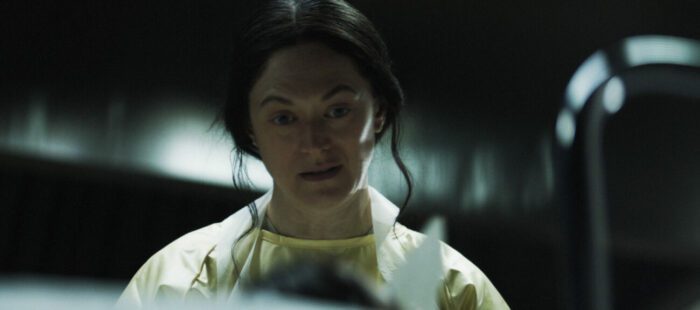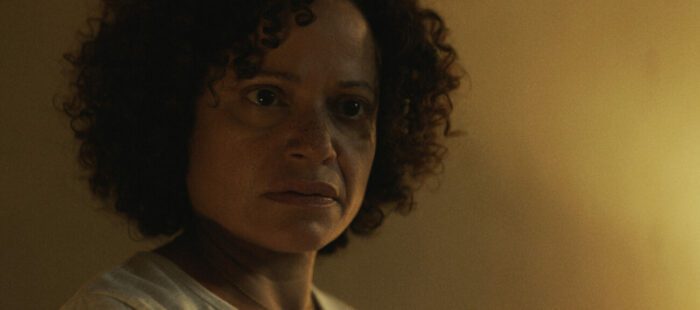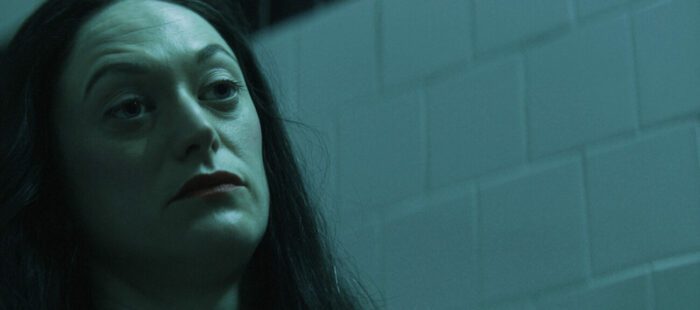2023 was a great year for modern takes on classic monsters. For example, Renfield and The Last Voyage of the Demeter put fun new spins on the classic Dracula story, and The Angry Black Girl and Her Monster was a touching remix of Frankenstein. But in my opinion, one 2023 reimagining stands head and shoulders above them all: Laura Moss.
birth/rebirth is a Frankenstein-esque tale about a girl who tragically dies and is brought back to life, and it’s a home run on just about every level. The performances are great, the story is captivating, and the horror is just about the definition of an emotional gut punch. You could probably write a book about everything the movie gets right, but in this article, I want to focus on the thing that stood out to me the most.
At its core, birth/rebirth is a fresh presentation of an old moral conundrum. It raises the age-old question of how far a mother would go to care for her child, and it doesn’t give us any easy answers. The film has a definite point of view to be sure, but it conveys its message in a thoughtful and sensitive way, fully aware that it’s sometimes dreadfully difficult to do the right thing. That balance is as enthralling as it is uncommon, so let’s take a deep dive into this modern classic and see just how it insightfully dissects the horrors of the human condition.
The Basic Plot of birth/rebirth
To start, let’s quickly go over the plot of birth/rebirth. The movie is about two medical professionals, Rose and Celie, who couldn’t be more different. Rose is a pathologist who only cares about her work, and she seems to have absolutely zero concern for other people.
To take just one example, there’s a scene early on in the film where one of the doctors under her supervision asks to leave work early because something happened to his kid at school, but Rose doesn’t show the guy an ounce of compassion. She asks where his wife is, and when he says she’s already at the school, Rose tells him he doesn’t need to leave. One parent is enough, so the poor guy has to keep working until his shift ends.

In contrast, Celie is a maternity nurse, and when birth/rebirth begins, she’s full of life and laughter. Not only does she absolutely love her daughter Lila, but she also does her best to encourage and support her patients. She just seems like an absolute joy to be around, but that all changes when her daughter dies unexpectedly. She becomes completely distraught, and her demeanor only grows worse when she finds out that Lila’s body has gone missing.
See, Rose isn’t just obsessed with her work at the hospital. She’s also been secretly developing a technique to bring people back from the dead, and when she comes across Lila’s corpse, she decides to take the girl home and try to revive her. Her experiment succeeds, and she attempts to make Celie think the city lost her daughter after they took the girl’s body out of the hospital. However, Celie soon discovers the truth, and she decides to live with Rose to help care for the newly revived Lila.
At first, everything goes pretty smoothly, but unsurprisingly, Rose and Celie eventually run into some problems. To keep the girl alive, they have to resort to highly unethical means, and by the time the credits begin to roll, their commitment to caring for Lila leads to the death of one of Celie’s patients.
The New Spin
As you can tell from that brief plot rundown, birth/rebirth is all about how far a mother would go to provide for her child, but it puts a unique spin on that time-honored trope. Usually, the biological mother is the one who goes to unthinkable lengths for her kid, and it’s up to someone else to point out how horrible her actions are. But this time, it’s the other way around. The doctor, the woman who gave Lila new life, is the one who crosses moral lines for the girl, and her real mother strongly objects to these unethical schemes.
Lila requires a special serum made from fetal cells to stay alive, and Rose gets those cells in some very unorthodox ways. At first, she has a sexual encounter with a man in a public bathroom, but she doesn’t do it for pleasure. She does it to collect the guy’s semen, and she then uses that semen to impregnate herself.

After several weeks, she takes a drug to induce an abortion, and she uses the fetal remains to make the serum. However, some time afterward, she develops an infection that leaves her unable to conceive, so she has to find a new source for her serum. She finds a pregnant woman named Emily who’s a genetic match (unfortunately, Celie isn’t), and she devises a dastardly plan. Emily recently had some sort of test done, and since Rose is working on the results, she decides to intentionally botch them so the woman will have to undergo an amniocentesis.
This is obviously super unethical, and Celie vehemently objects. She says it’s unfair to cause this poor woman undue stress and anxiety, but since she doesn’t have a better plan, she eventually acquiesces. However, even that’s not enough, so Rose decides to botch the results again and force Emily to endure yet another amniocentesis. In fact, she wants to keep doing that every month until Emily finally gives birth, and unsurprisingly, Celie is horrified. She knows how terrible this is, but once again, since she doesn’t have a better idea, she just goes along with it.
Dueling Philosophies
In other words, birth/rebirth is essentially about two dueling philosophies. On the one hand, Rose doesn’t seem to care one lick about other people. She will do whatever it takes to achieve her goals, even if that means abusing and mistreating other people. Hell, she even conceives a child just to kill it and harvest its cells, so for her, the end totally justifies the means.
In contrast, Celie thinks it’s wrong to treat people like objects. She believes that no matter how good our intentions may be, it’s not okay to use people as a means to our own ends. So even though she grudgingly goes along with Rose’s plans, she’s deeply uncomfortable with them.

Now, for most of its runtime, birth/rebirth doesn’t make a judgment about which of these competing attitudes is right. The film simply presents the facts, and it allows us to come to our own conclusions. In fact, if anything, I’d say the movie does a great job of presenting both sides fairly and accurately.
The horror of Rose’s schemes is obvious, but the desperation behind them is equally clear. She’s trying to keep a young girl alive, so even if we vehemently disagree with her methods, we can’t help but sympathize with her motives. Like I said before, it’s sometimes incredibly difficult to do the right thing, and this film is a perfect representation of that terrible truth.
The Real Monsters
However, when we reach the final act, birth/rebirth leaves its neutrality behind, and the movie makes its message pretty hard to miss. After Emily’s second amniocentesis, the beleaguered woman decides to switch hospitals, so Celie and Rose can no longer use her to get new fetal cells. They scramble to come up with a new plan, and they even try using Rose’s bone marrow, but nothing works. The pair eventually run out of serum, and sadly, Lila dies a second time.
It seems like this experiment has failed, but Celie isn’t ready to lose her daughter again. Instead, she finds out where Emily lives, and she shows up at the woman’s house under false pretenses. She slips something into Emily’s drink that causes her to have a seizure, and when the EMTs arrive, Celie tells them to take the poor woman to the hospital where our two main characters work.
While there, Emily gives birth to her baby, but she doesn’t survive the ordeal. This allows Rose to get the cells she needs from the woman’s corpse, and from there, she and Celie revive Lila and pick up right where they left off.
This is an emotionally brutal sequence, and it’s especially impactful because it’s one of the few genuinely horrific moments in the entire film. Sure, birth/rebirth is generally classified as a horror movie, but by and large, it plays out more like a sci-fi drama than anything else. It’s mostly devoid of things like jump scares and creepy imagery, and the horror only comes to the fore twice in its entire runtime.

First, there’s a scene where Lila attacks and kills Rose’s pet pig, but it’s fairly brief. It’s obviously more of an appetizer than anything else, so when we finally get to the big horror sequence at the end, it shows us who the monsters of this story really are. And somewhat surprisingly, the reanimated corpse isn’t one of them. Rather, it’s the women who’ve cared for her the entire time. More specifically, Celie becomes a monster when she decides to hurt Emily to save her daughter, and Rose, who’s acted like that right from the beginning, has always been a monster.
And with that ending, birth/rebirth lets us know where it stands on its main characters’ philosophical disagreement. Even though we may sympathize with Rose (and Celie in the last act), the film is clear that it’s not okay to use other human beings as means to our own ends, no matter how noble our intentions may be. People deserve to be loved and respected, not used and abused like objects, and if we violate that principle, we’ll become monsters just like Rose and Celie.
That being said, birth/rebirth isn’t just an old-fashioned morality tale. Like I said before, this movie doesn’t give us any easy answers. It understands that life is complex and that it’s sometimes incredibly difficult to treat people with the dignity they deserve. In fact, there might even be times when it seems like we simply can’t do it, and birth/rebirth doesn’t shy away from that uncomfortable fact. By presenting Rose and Celie as sympathetic monsters facing an impossible situation, it fully embraces the tension between our moral principles and the pressing demands of life, and rather than try to resolve that tension, it just brings the problem to the fore and forces us to confront it.





